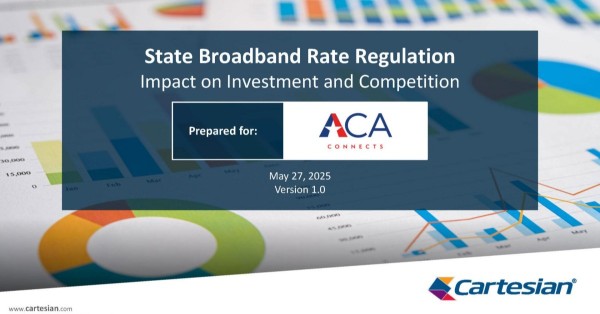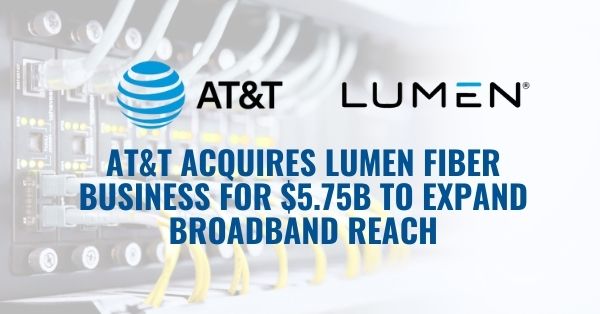Vodafone Spain, in collaboration with MasOrange, has taken a decisive step in reshaping Spain’s fiber network landscape with the formation of FibreCo. This innovative joint venture combines the existing network assets of both companies to establish a robust fiber-to-the-home (FTTH) infrastructure, revolutionizing fixed-line connectivity across the country. Complemented by a strategic agreement with Telefónica, Vodafone Spain is building a comprehensive national FTTH network that promises extensive coverage and advanced technological capabilities.
FibreCo: Transforming Spain’s Fibre Connectivity Landscape
FibreCo, temporarily named for operational clarity, brings together the expansive FTTH networks of Vodafone Spain and MasOrange. The unified infrastructure will span 12.2 million premises, enabling enhanced access to high-speed internet for millions of homes and businesses. This collaboration addresses the increasing demand for seamless connectivity and supports Spain’s digital transformation goals.
The announcement follows Zegona Communications’ acquisition of Vodafone Spain in May 2024 for €5.877 billion. Zegona, known for its strategic investments in telecommunications, has been pivotal in Vodafone Spain’s transformation, steering the company toward innovative partnerships and infrastructure enhancements.
FibreCo’s Financial Vision: Growth and Investor Opportunities
While the precise financial terms of the FibreCo partnership remain undisclosed, its potential is clear. FibreCo is projected to generate an annual EBITDA of €480 million within three years of operation. This forecast is underpinned by the extensive existing infrastructure and a current utilization rate of nearly 40%, serving over 4.5 million customers from Vodafone Spain and MasOrange.
Zegona and MasOrange are actively seeking a third-party financial investor to join FibreCo, with plans to allocate ownership as follows:
- MasOrange: 50%
- Zegona: 10%
- Third-party investor: 40%
Initial interest from potential investors has been robust, reflecting the market’s confidence in FibreCo’s strategic value and its already operational FTTH infrastructure. This ownership structure aligns with the growing trend of shared investment in telecommunications to optimize resources and expand market reach.
XGS-PON: The Technology Powering FibreCo’s Future
FibreCo is committed to deploying XGS-PON (10-Gigabit Symmetrical Passive Optical Network) technology across its network. This next-generation technology will enable symmetrical upload and download speeds, supporting the bandwidth-intensive needs of consumers and businesses alike. By adopting XGS-PON, FibreCo ensures future-proof connectivity capable of meeting evolving demands for data-rich applications, such as streaming, gaming, and remote work.
Vodafone Spain, as a key stakeholder, will utilize FibreCo’s network to provide advanced services to its retail and wholesale customers. This symbiotic relationship enhances the value proposition for both FibreCo and Vodafone Spain, ensuring seamless integration and optimal use of the infrastructure.
Telefónica Partnership: Expanding Vodafone’s FTTH Reach
In a related strategic move, Zegona announced in November 2024 a partnership with Telefónica Spain to establish a separate fiber network company. This new venture will cover 3.6 million premises and renew a wholesale access agreement with improved terms. Vodafone Spain will hold a 10% stake in this venture, further consolidating its position in Spain’s fiber market.
The combination of these initiatives signifies a comprehensive transformation of Vodafone Spain’s fixed-line strategy, effectively creating a nationwide FTTH footprint. The collaboration with Telefónica complements the FibreCo partnership, solidifying Vodafone Spain’s role as a leading provider of high-speed connectivity.
Navigating Approvals: FibreCo’s Path to 2025
The FibreCo transaction is subject to regulatory approvals, with completion anticipated by mid-2025. The introduction of the third-party investor is also expected during this timeframe, aligning with Zegona’s strategy to optimize its financial portfolio while ensuring operational efficiency.
Eamonn O’Hare, Chairman and CEO of Zegona, emphasized the transformative nature of this initiative, stating: “Entering this FibreCo partnership with MasOrange, alongside our agreements with Telefónica, reshapes Vodafone Spain’s fixed-line strategy. It guarantees access to a future-proof national fiber network, delivering substantial cost savings and attractive economic terms.”
How Spain Leads the Global FTTH Revolution
Spain’s telecommunications market is renowned for its advanced fiber infrastructure, boasting one of the highest FTTH penetration rates globally. This leadership has been driven by extensive overbuilding, where multiple operators deploy parallel fiber networks, and the creation of a dynamic wholesale ecosystem.
Operators in Spain, including MasOrange, Telefónica, and Vodafone, have embraced network-sharing models to enhance efficiency and reduce costs. These partnerships exemplify the country’s commitment to fostering a competitive and collaborative market.
According to telecom consultancy Nae’s director Joaquín Guerrero, “The creation of FibreCo is part of a broader trend towards consolidation in Spain’s fiber market. This collaboration reflects the industry’s shift towards shared infrastructure and investment, setting a global benchmark for operational excellence.”
FibreCo’s Role in Transforming Spain’s Digital Economy
The launch of FibreCo represents a paradigm shift for Vodafone Spain. By integrating its network assets with those of MasOrange and Telefónica, Vodafone Spain is well-positioned to achieve several strategic goals:
- Comprehensive National Coverage: FibreCo ensures extensive FTTH access across Spain, addressing the digital divide and supporting regional development.
- Operational Efficiency: Shared infrastructure reduces duplication, streamlining network maintenance and upgrades.
- Financial Sustainability: Monetizing fiber assets through partnerships and investments enhances profitability and reduces debt burdens.
- Technological Leadership: The deployment of XGS-PON technology underscores FibreCo’s commitment to delivering cutting-edge connectivity.
A Future-Oriented Model
FibreCo’s model exemplifies the future of telecommunications, where collaboration, innovation, and investment converge. The separation of network ownership (InfraCos) from service delivery enables operators to focus on their core competencies, enhancing customer experiences and fostering market competition.
With Spain leading the charge, the lessons from FibreCo’s development are likely to influence global telecommunications strategies. The successful implementation of this model highlights the potential of shared infrastructure to unlock new opportunities, drive efficiency, and deliver long-term value.
Conclusion
The formation of FibreCo is a landmark moment for Vodafone Spain and its partners. This venture not only addresses the growing demand for high-speed connectivity but also sets a precedent for collaborative models in the telecommunications industry. As FibreCo prepares for its official launch, it symbolizes a commitment to innovation, efficiency, and inclusivity in the digital age.
By harnessing the strengths of Vodafone Spain, MasOrange, and Telefónica, FibreCo is poised to become a cornerstone of Spain’s digital economy, paving the way for a more connected future.
























